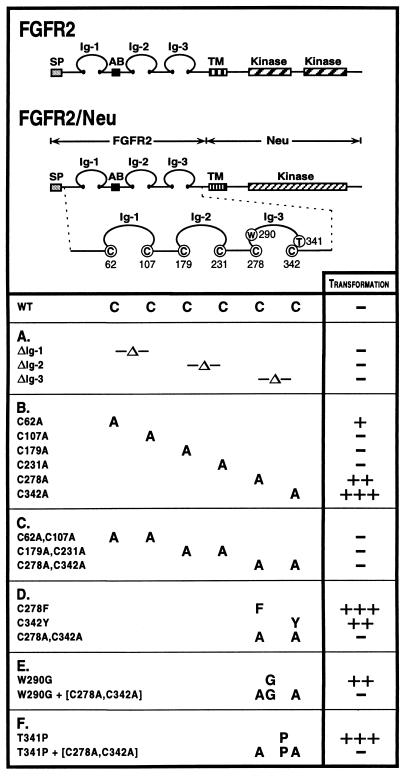Figure 1.
Structure and transforming activity of FGFR2 constructs. FGFR2 is shown in comparison with FGFR2/Neu chimeric receptors, which contain the extracellular domain of FGFR2 fused to the transmembrane and intracellular domains of Neu. The six cysteine residues in the FGFR2 extracellular domain involved in intramolecular disulfide bonding are Cys-62, Cys-107, Cys-179, Cys-231, Cys-278, and Cys-342. (A) Deletions of the Ig domains remove the sequence between the disulfide bonded cysteines and replace those cysteine residues with alanine. (B) Single mutations of Cys → Ala in the extracellular domain. (C) Pair-wise mutations of Cys → Ala affecting each disulfide bond in Ig-1, Ig-2 and Ig-3. (D) Craniosynostosis mutations affecting Cys-278 and Cys-342. (E) The noncysteine craniosynostosis mutation W290G. (F) The noncysteine craniosynostosis mutation T341P. Transforming activity for each chimeric receptor, shown at right, was measured by focus formation assays in NIH 3T3 cells. Results presented are the average of at least three experiments. The results are given as a percentage of the transformation efficiency of oncogenic Neu and were reported as follows: −, 0–5%; +, 5–10%; ++, 10–20%; +++, >20%.

